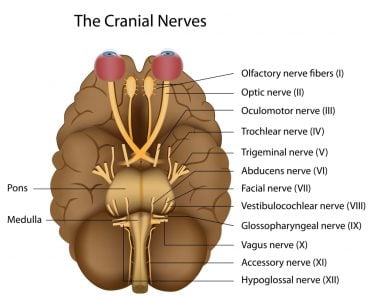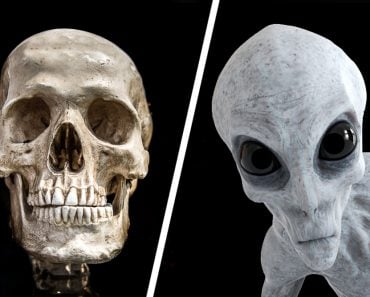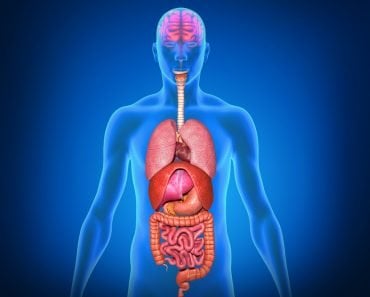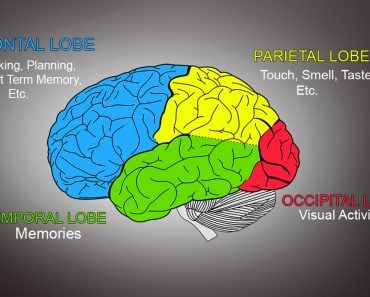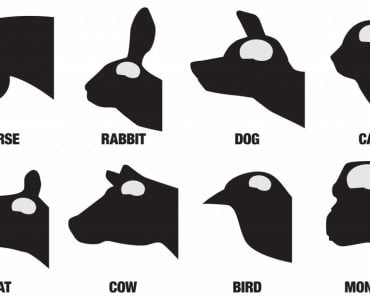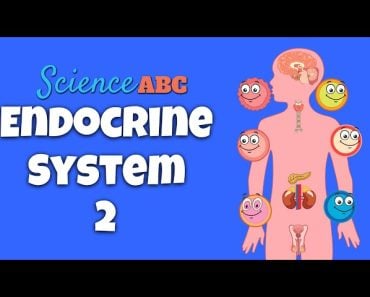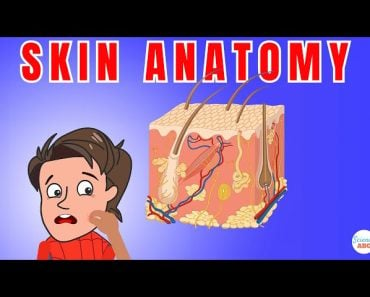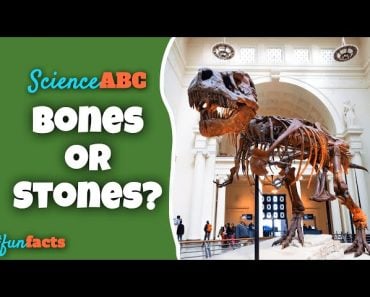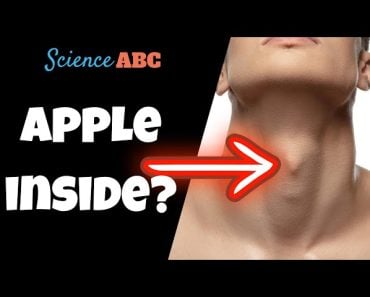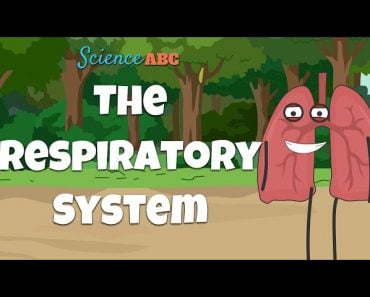Table of Contents (click to expand)
The bones that make up our skull are the cranial bones, the facial bones, and the mandible.
The main framework of our body is formed by the bones. Our skeleton is a very essential part of our body structure and makes for a very interesting field of study. It can be divided into 2 parts – the axial skeleton and the appendicular skeleton. The former consists of the skull, hyoid bone, ossicles of the middle ear, sternum, rib cage and the vertebral column. These constitute 80 of the 206 bones in the body. The rest of the bones, i.e., those related to the limbs, constitute the latter part. These constitute the remaining 126 of the 206 bones in our body.
Recommended Video for you:
Skull
The first thing we think at the mention of the word ‘skull’ is that it protects the brain. Apart from that, however, it also acts as a seat for sensory organs, nerves, etc. Our skull comprises 22 bones, of which 21 are fixed in their place, i.e., they are immovable. The only movable bone of the skull is the mandible, popularly known as the lower jaw.
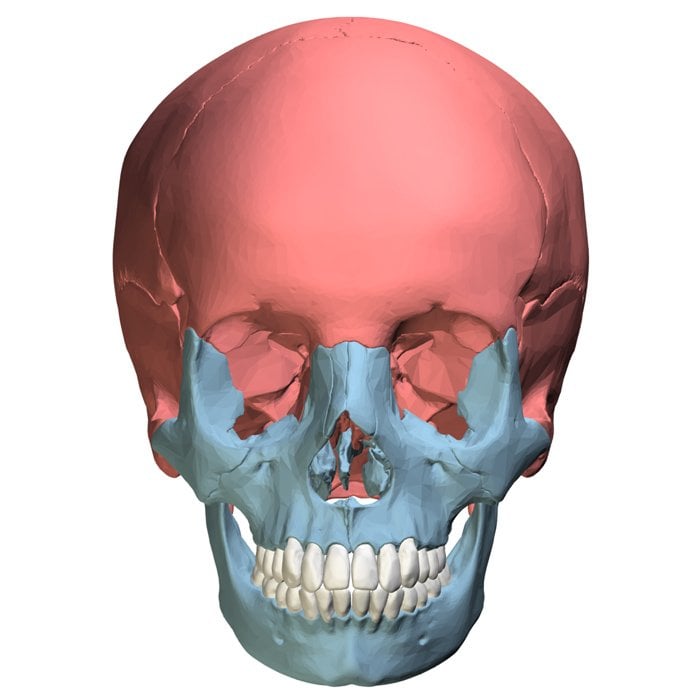
The skull is divided into 2 parts – the cranial and the facial bones. The former has 8 bones, while the latter has 14 bones. All the bones are fused together by sutures, with the exception of the mandible.
Cranial Bones
The cranium is composed of 8 bones. Of these, 4 are paired, while the remaining 4 are single. Starting from the back of the skull, the first is the occipital bone. This forms the posterior portion of the skull and part of the base of the cranium. At its base, there is an opening called the foramen magnum. The spinal cord passes through this opening as it leaves the brain. Next to it, on either side, are the occipital condyle. Condyles are rounded structures, or protuberances on bones, which are used for articulation with other bones. The occipital condyles help in articulation with the first cervical vertebra, called the atlas.
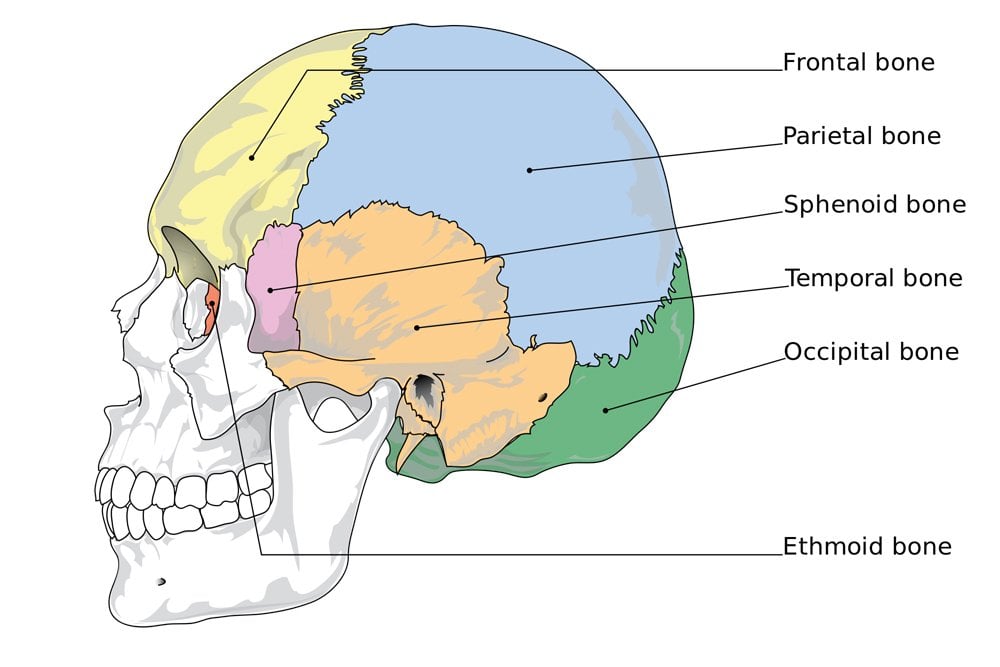
Above this, we have the parietal bones. These are the first paired bones of the cranium. They lie above the occipital bone, and the two parietal bones join at the top of the head. Below these, on either side of the cranium, we have the temporal bones. These are the other paired bones of the cranium. They form the lower lateral side of the cranium, while the parietal bones form the upper lateral part of the cranium. Obviously, the part of our head that we refer to as the ‘temple’ corresponds with the temporal bone.
At the front of the cranium is the frontal bone. Apart from our forehead, it also forms the top part of the orbital cavity and the root of our nasal cavity. The biggest part of it, however, is the flattened part that forms our forehead. Above the part forming the orbital cavity, there is a slight thickening of the frontal bone on each side, thus forming eyebrow ridges.
Apart from these, there are 2 other bones that are not visible from the outside. These are the ethmoid and sphenoid bones. The sphenoid is a butterfly-shaped bone that articulates with almost every bone of our skull. It forms the base of the central portion of our skull and also extends towards the side in order to add to the side our skull as well. It also has a depression that houses the pituitary gland.
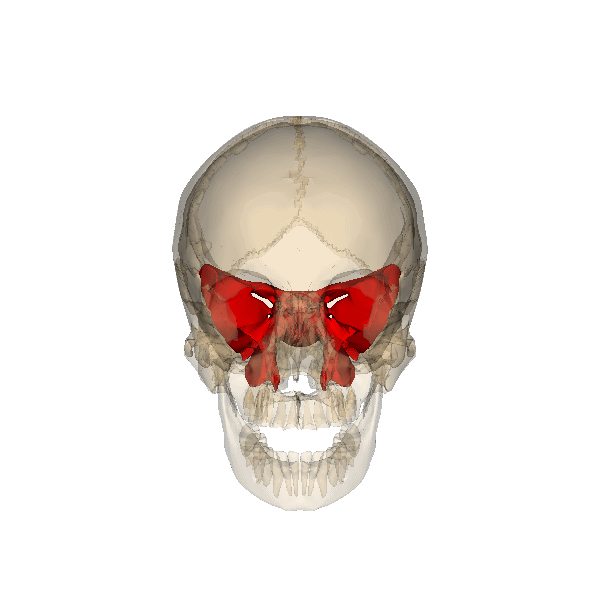
The ethmoid bone forms a part of the anterior base of our cranium. It also forms the lateral part and roof of the nasal cavity, as well as the upper part of our septum.
Facial Bones
There are 14 bones in our face, of which all but 2 are paired. Let’s start from the bottom.
First, we have the mandible, or the jaw bone. This is the only movable bone of our skull, and one of the two unpaired bones of the face. At birth, it is comprised of 2 bones, the left and right mandible. However, they soon fuse completely to form a single, U-shaped mandible.
Above this, we have the maxillary bones. These are a pair of bones that form our upper jaw, part of the palate, the medial part of the floor of our orbits, and the lateral base of our nasal cavity. Laterally above, on each side of the maxillary bones, we have the 2 zygomatic bones. These are paired bones that do not touch each other, popularly known as the cheekbones. They form a major portion of the lateral wall of the orbits. On the side, they extend back and join the temporal bone to form the zygomatic arch.
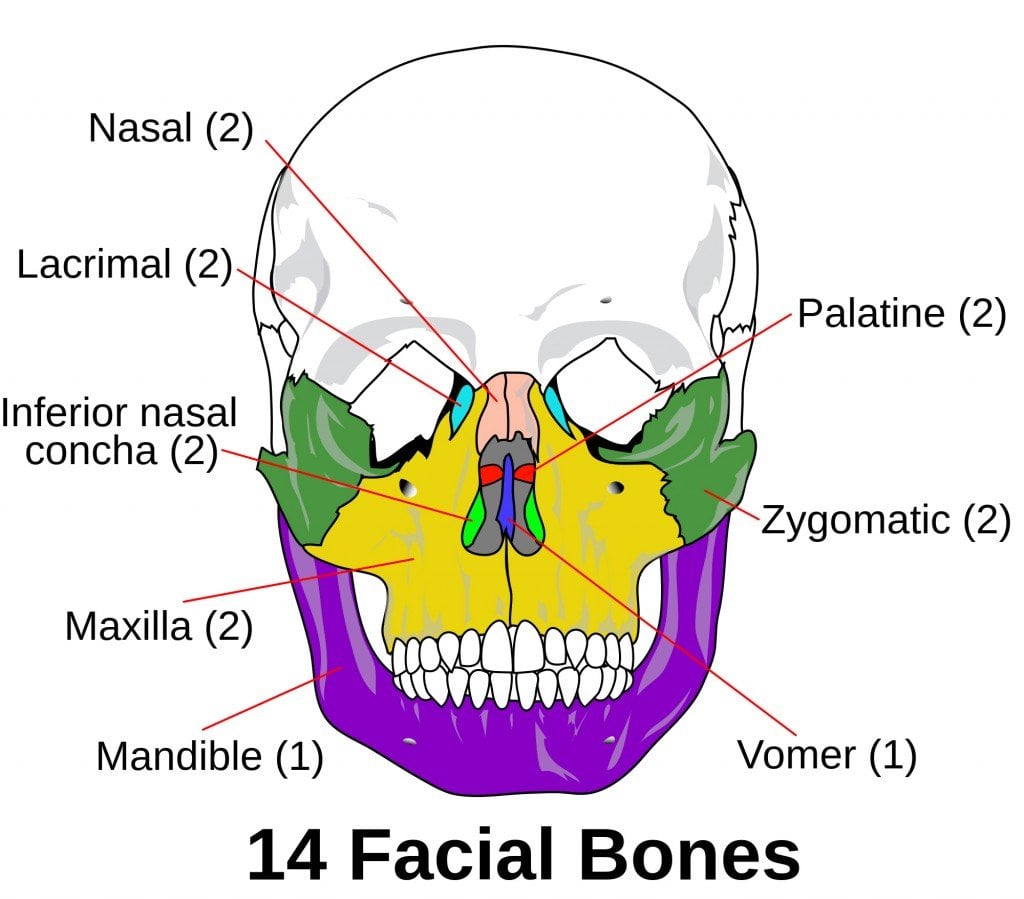
Now, let’s talk about the nose. At the top part of the nose are the 2 nasal bones. These join to form the bridge of our nose. When our nose ‘breaks’, it is our nasal bones that do the breaking. The inferior nasal conchae are paired bones. These form a curved bony plate that projects into the nasal cavity. They are also called inferior nasal turbinates, as they do the work of a turbine. The air we inhale passes through them and is pushed against their mucus-lined walls, thus undergoing cleansing, the addition of moisture, and warmth. The superior part of the conchae are formed by a cranial bone – the ethmoid bone.
The vomer is the second unpaired bone of our face. It is a small triangular-shaped bone that forms the anterior-posterior wall of the nasal septum. The palatine bones are paired bones. Their largest part contributes to the formation of the palate. They are irregularly shaped. They also contribute in a small part to the side wall of the nasal cavity and the orbit. The final paired bones of the face are the lacrimal bones. These are small, rectangular bones, both of which form a part of the side of the orbit. Each bone has a small depression towards its anterior end, which extends downwards to form the nasolacrimal canal. The secretions of our lacrimal gland drain out through this canal. Normally, they empty out towards the back end. However, when we cry, i.e., when there is increased production of tears, part of the secretion is drained towards the front, thus causing a “runny nose”.
These are the 22 bones that comprise our skull. Every bone has a specific function, and damage to any of them can be very dangerous!

